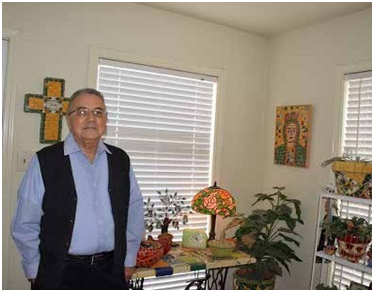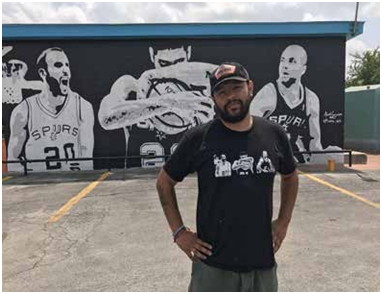By Dr. Ricardo Romo
There is great uncertainty about the pandemic–no one knows how many lives will be affected, how long it will last, and how our lives will look in the aftermath. We are not even sure if there is a “normal life” in store for us anytime in the near future.
While the pandemic crisis appears to be receding in some U.S. communities and lockdowns are somewhat in decline, that is not the case in Texas where the infected numbers continue to rise. San Antonio is one of the many large cities where Covid-19 cases increased this past week.
 Adding to the anguish caused by the coronavirus, the outrage and grief over the vivid videos of police brutality has the entire world engaged in marches against violence and inequality. In the week after the video showing the brutal killing of George Flyod, protesters marched in more than 140 U.S. cities. Protestors also marched in solidarity with the Black Lives Matter movement in Europe’s main capitals as well as in cities of New Zealand and Australia. How the pandemic and the rise of political protest is affecting the Texas Latino art community is the focus of this essay.
Adding to the anguish caused by the coronavirus, the outrage and grief over the vivid videos of police brutality has the entire world engaged in marches against violence and inequality. In the week after the video showing the brutal killing of George Flyod, protesters marched in more than 140 U.S. cities. Protestors also marched in solidarity with the Black Lives Matter movement in Europe’s main capitals as well as in cities of New Zealand and Australia. How the pandemic and the rise of political protest is affecting the Texas Latino art community is the focus of this essay.
The art world is in turmoil that is a reality. Many museums and galleries remain closed. Art sales are down significantly. Nonetheless, most Latino artists I spoke to remain optimistic and are currently preparing works for both virtual exhibitions and gallery openings. They have resigned themselves to remaining sheltered in place. While constrained by the lockdown, they remain determined to stay active and strive daily for creativity.
The pandemic and resulting economic downturn, as well the new protests against police brutality, combined to disrupt local artist Albert Gonzales’ world of art. He had just put a pause on painting with the birth of a new baby when the Covid-19 crisis began. His days were filled with child care and household duties as a stay-at-home father.
But soon, not having the normal access to fellow artists and galleries led him to moments of anxiety and internal turmoil. Married to an artist [Caroline Gonzales] made the transition to quarantine easier. They adjusted and now both go to their studios on South Flores with their baby in tow.
Albert Gonzales struggled with how to lend his artistic voice to the Black Lives Matter protest movement and one day emerged from the studio with an image of a sole black rose on a stem. His title for the painting, 846 is the time, 8 minutes and 46 seconds, that a police officer knelt on the neck of George Floyd. I spoke by phone to Gonzales on a Saturday afternoon as he settled into his studio. He was more concerned about how to make an eloquent political statement about Floyd than about how he would sell his art. He is feeling creative again and the anxiety of the past has eased. He is ready to create more art.
Surviving the pandemic appears simpler for those who still have fulfilling day jobs or recently retired from successful careers. My high school friend, Tim Palomera, is the latter case Tim is a retired architect who turned to ceramic arts as a second career. He works on this art everyday, although he acknowledges that sales are down.
Among Palomera’s most popular creative pieces are those designed for home and garden. They include religious objects such as crosses and bowls with the Virgin of Guadalupe image. Galleries that sold his work, however, are temporarily closed, and the weekend art fairs where he often presented his art work are a thing of the past–at least for now. He is spend- ing time with historical architectural postcards and books and looks forward to devoting more time soon to ceramic art.
Denise Pintor Homer spent much of her life in the construction industry and today is able to spend her retirement years painting and doing community work. She has work space at the Millhouse Studios in San Antonio with 30 other artists, most of whom work in oil and acrylic painting or wood and metal work. The pandemic and subsequent economic downturn gave Denise added reasons to champion affordable housing, city support for the arts, and civic contribution to art projects.
While Denise has increased her political activism over the past three months, she still makes time to work in her home studio and has re- cently returned to her public work space. She is also one of the contributing artists who joined the “Paint the Park” project that I organized at Brackenridge Park. Modelled after early artistic efforts at Central Park in New York City, we encouraged park visitors to take note of the creative efforts by San Antonio artists who paint in “plein air” with the goal of sharing their own interpretation of Brackenridge Park landscapes and life.
We are living in troubled times, and many Latino artists have been challenged to do things differently. Their stay at home experience has taught them patience, but also given them the opportunity to invest in their emotional and mental growth. Many will take ad- vantage of the time alone to reflect on how they can be better artists as well as better human beings–the latter is a worthwhile goal for all of us.
Photo Credits: Dr. Ricardo Romo


Recent Comments